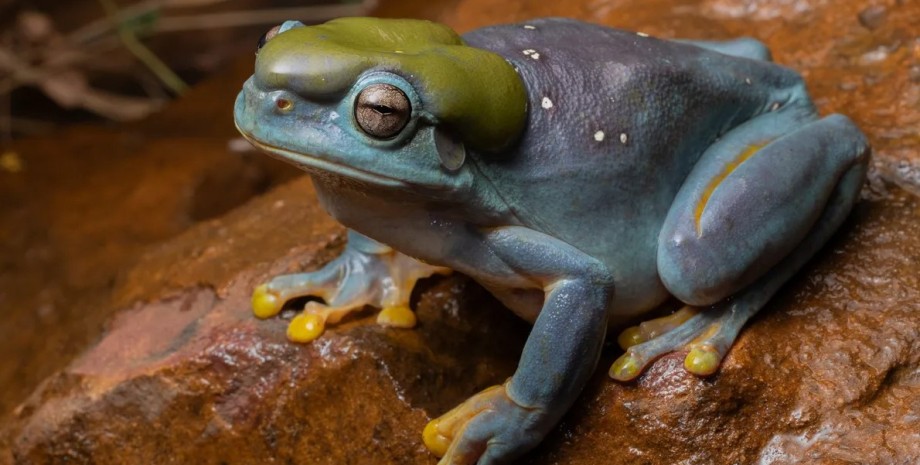
 By Eliza Popova
By Eliza Popova
But this time, scientists were fortunate enough to meet an absolutely unusual individual, writes iflscience. The Australian wildlife team (AWC) researched the wildlife reserve of the Cherni River and the Artesian ridge along the Kimberli coast in the northwest of Australia, when she suddenly noticed something strange. Scientists made a rare discovery when they found a wonderful wood frog with incredible blue skin.
Scientists believe that such a strange color is caused by a rare genetic mutation, which affects the production of yellow pigments. In focus. Technology has appeared its Telegram channel. Subscribe not to miss the latest and most intrusive news from the world of science! According to field ecologist Jake Barker, the team first noticed a rare mutant at night when he was sitting on a bench in a workshop near the research center of scientists.
The team notes that such a mutation is so rare that to meet a blue wood frog is a literally a chance that falls once in a lifetime. Green color in animals, such as amphibians, reptiles and birds, is usually created by the combination of blue and yellow pigments. However, there is a mutation known as accessorism - it violates the biochemical pathways of synthesis and the deposition of yellow pigments. As a result of such a mutation, the animal, in fact, seems blue.
Earlier, scientists have already recorded anxanthism in several different animals, but in a wonderful wood frog, this is the first time. According to the curator of the biology department of conservation of amphibians and reptiles in the Australian Museum, Dr. Jodi Rule, green frogs are in fact rarely no yellow pigment on the skin, resulting in a creature completely or partially blue. She also stated that during her work she saw incredible many frogs, but she met her for the first time in history.
Without its secretive green camouflage, a unique frog is likely to be higher than the risk of being noticed by predators. Fortunately, for this mutant, the representatives of the species have another effective way to survive predators - on their head is a parotid gland, filled with a bitter tastes of fluid - a light poison is not toxic to humans, but strong enough to divert the predator.










All rights reserved IN-Ukraine.info - 2022